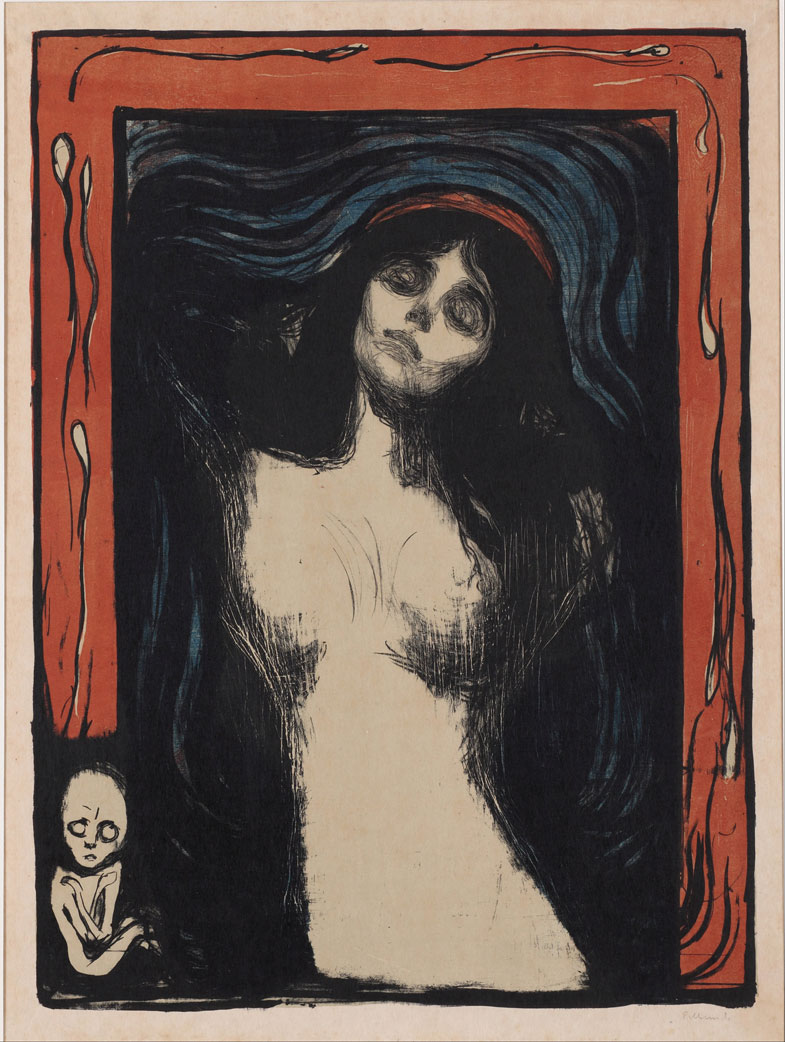< Back |
Munch’s Madonna: Sacred or Profane?
Artist: Munch, Edvard (Norwegian, 1863 – 1944)
Title: Madonna
1895
color lithograph and woodcut [1902 printing] on oriental paper: lithograph printed from 3 stones in beige, red, and black; woodcut printed from 1 block in blue
1990.26.2
National Gallery of Art, Washington, DC
Student Curator Comments:
Munch originally conceived of Madonna as a painting in 1894. In 1895 he created the print plate from which this Madonna was pulled in 1902.1 Elizabeth Prelinger and Andrew Robinson, “Madonna” in Edvard Munch: Master Prints, ex. cat. (Washington, DC: National Gallery of Art, 2010) 69.The figure depicted is a pale, luminous female, crowned with a sliver of a red halo and encircled by an aureole of undulating blue and black lines. She is nude, with eyes closed and head back. The composition is encompassed by a frame. In its bottom left corner, a small, frail creature looks up at the woman with an anxious expression. This tiny baby reminds the viewer of the woman’s potential to conceive new life, her capacity to fulfill the divine spark of creation, reinforced by her halo and aureole. Yet her nudity subverts a traditional reading of this image. The title Madonna is typically used to name the Virgin Mary, the Christian mother of God, and the epitome of chastity and virtue. Here Munch emphasizes his Madonna’s physicality, rather than her spirituality. While this representation is extremely unconventional, it expresses the artist’s thoughts about the Madonna as a representation of beauty, birth, eternity and mortality. It also represents a particular strain of modernity, found at the turn of the twentieth century, merging the sacred and the profane.
References
| 1. | ⇧ | Elizabeth Prelinger and Andrew Robinson, “Madonna” in Edvard Munch: Master Prints, ex. cat. (Washington, DC: National Gallery of Art, 2010) 69. |





